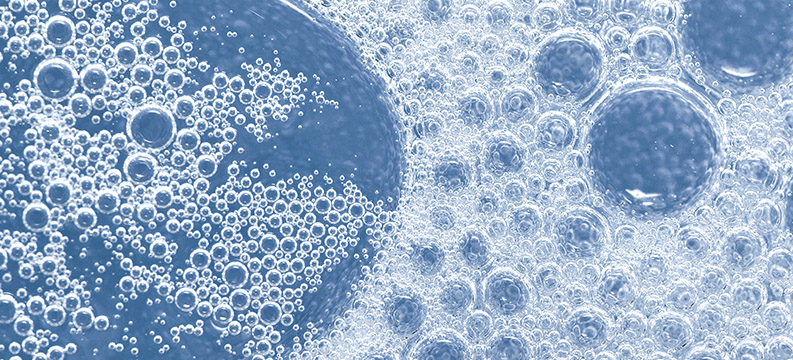How To Choose The Right Cleaning Solution...SSTAR TRECC
Ok. I admit it is not the way true “Trekkies” would spell the name of their favorite show; But the acronym SSTAR TRECC stands for the top 10 considerations when choosing the best cleaning chemical for the cleaning job. Remembering them can help position your sales people and custodial staff as chemical solution experts and, in turn, your enterprise will thrive in the cleaning space.
SSTAR TRECC stands for Soil, Surface, Time, Agitation, Rinse, Temperature, Regulation, Environment, Concentration, Cost. Let’s take a closer look at what makes these the top considerations in any cleaning chemical choice.
Soil. Knowing the type of soil your customers are trying to remove is vital to advising them on the best chemicals to use. For example, greasy organic-based soils usually require an alkaline detergent, while inorganic soils respond better to acidic cleaners. Is the “soil” a bacteria or germ that requires disinfection or sterilization? How often cleaning is performed and how much traffic the surface receives also are factors; restorative rather than maintenance cleaners may be necessary to remove soils in high-traffic areas, especially if cleaning is less frequent.
Surface. Knowing the type—and condition—of the surface being cleaned is a must. A porous surface will demand different product than non-porous in the same way smooth, new surfaces will react to chemicals differently than old, marred surfaces. Meanwhile, some surfaces, such as plastic and aluminum, can be degraded or ruined by using the wrong cleaning solution. Find out the specific surfaces your customers are looking to clean. Cross check which product will work the best on multiple surfaces (to help reduce cost) but be prepared to recommend specialty cleaners for surfaces when necessary.
Time. How long a cleaning solution takes to clean a surface and how long the cleaning personnel have to complete the task at hand are critical to choosing the right solution. If time is not a vital factor, a slower acting, less potent chemical or one that requires a longer dwell time may be the answer. However, if cleaning must be done as expeditiously as possible to prevent downtime, such as in a manufacturing plant or food service facility, a stronger, faster-acting solution may be needed.
Agitation. Agitation speeds up the cleaning process. Nearly every cleaning duty requires some agitation; the question is, how much agitation is needed? Will a sponge, cloth or scouring pad be enough or does the job call for the heavy agitation of an auto scrubber or power washer? These answers will help guide you to the best cleaning solutions.
Rinse. While some surfaces, such as electronics, or environments with no floor drains cannot tolerate or require rinsing after cleaning, most do. Again, the question is to what degree. Surfaces that are rinsed in a sink or with a hose call for different detergents than ones that can stand up to—or require—a heavy rinse (such as with a power washer). Convenience can also be a factor; if rinse water must be carried in buckets from a distant janitor’s closet, a product that requires minimal rinsing will probably be a better choice.
Temperature. Because chemical reactions occur faster, most cleaners and disinfectants work better and quicker in higher temperatures. Find out, can the water be heated? If not, choose products that are effective at room temperatures. Meanwhile, food service stations, such as bar sinks, must meet higher temperature mandates for sanitizing purposes.
Regulation. There are an increasing number of regulations surrounding cleaning solutions, and various sectors, such as health care, schools, and food service, have their own unique set of laws surrounding acceptable products and their use. Keep abreast of current regulations to be sure that the cleaning solutions being recommended will keep the building compliant and the occupants and visitors safe.
Environment. As the world becomes more health and environmentally conscious, where cleaning is being performed and with what chemicals has become increasingly important. Many traditional solvents have been banned for being harmful; other stronger solvents are fine to use but not, for instance, in confined spaces where they can negatively impact indoor air quality. There are also chemicals that are better for use around children and others with compromised immune systems. Find out where the chemicals are to be used and be prepared to recommend safer alternatives to solvent-based cleaners upon request.
Concentration. Concentration is the manufacturer’s recommended ratio in mixing/diluting a concentrated solution with water. Ensuring the proper concentration allows the product to perform effectively and control costs. Consider using a chemical dilution system to mix the cleaning solution to get consistent mixing. Avoid the pour, eyeballing estimation better known as the “glug, glug” method which usually results in waste and potential exposure. The best way to find out is to read the product labels and product data sheets.
Cost. As one would guess, price remains a major factor in choosing a cleaner. However, it is important to remind customers to consider the overall—or “use”—cost just not the price per unit. For example, the cleaner mentioned above that offers the same high performance but at a lower dilution rate can cost less to use, even if the initial cost appears higher. Similarly, a chemical that may cost more but cleans more surface is overall less expensive.
To choose the right product for the right cleaning job, remember to consider “SSTARTRECC” next time you have a cleaning job to recommend or perform.



